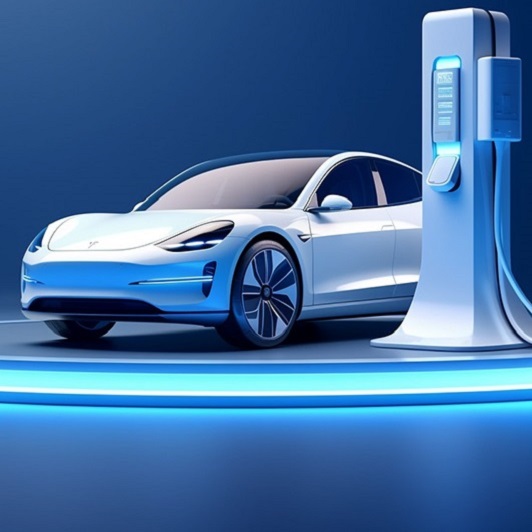
Stanford researchers have discovered a simple way to boost the range of lithium metal batteries to twice the range of conventional lithium-ion batteries which could provide a massive boost to the EV market.
Lithium-Ion Batteries
Rechargeable lithium-ion batteries (LIBs) are currently used in a wide array of electronic devices, including smartphones, laptops, tablets, power tools, portable speakers, drones and (importantly) electronic vehicles. Although they have a high energy-density and longer lifespan compared to many other types of rechargeable batteries, scientists have been testing a variety of new materials and techniques to improve the lifecycle of the kind of batteries needed to push forward with electric vehicle (EV) ambitions.
Lithium Metal Batteries
Lithium metal is thought the be a serious next-generation contender for EV batteries and they are different from lithium-ion batteries in that (as the name suggests) they contain lithium in its metallic form. One of the key advantages is that lithium metal batteries can go 500 to 700 miles on a single charge, which is twice the range of conventional lithium-ion batteries in EVs today.
Issue
However, one major issue (until now) of lithium metal batteries is that they lose their capacity to store energy after just a few cycles of charging and discharging. This would obviously be impractical for drivers who expect rechargeable electric cars to operate for years.
The Stanford Research Breakthrough
Researchers from Stanford University have announced a lithium metal battery breakthrough that is both low-cost and simple and could double the range of electric vehicles. During their research, they discovered that by simply resting the battery in the discharged state, lost capacity can be recovered and cycle life increased. The researchers say that this improvement can be made just by reprogramming the battery management software, with no additional cost or changes needed for equipment, materials, or production flow.
Discharge And Rest
The researchers highlighted how repeated charging and discharging of a lithium metal battery results in the build-up of additional dead lithium with solid–electrolyte interphase (SEI) around it. This causes the battery to rapidly lose capacity.
Using lessons learned in previous research they found that completely discharging the battery so there is zero current running through it, and resting it in the discharged state (for just one hour) strips the metallic lithium from the anode and dissolves away some of the SEI matrix (surrounding the dead lithium). This means that once the battery is recharged, the dead lithium can reconnect with the anode (the solid SEI matric mass is no longer in the way).
The result is that the dead lithium comes back to life, thereby enabling the battery to recover lost capacity, generate more energy, and extend its cycle life.
Given that the average (American) driver spends about an hour behind the wheel each day, the researchers say the idea of resting a car battery for several hours is, therefore, feasible.
Guide For Future Studies
The research report’s senior author Yi Cui, a professor of energy and engineering in the Stanford Doerr School of Sustainability said of the findings:
“Lithium metal batteries have been the subject of a lot of research,” and “our findings can help guide future studies that will aid in the advancement of lithium metal batteries towards widespread commercial adaptation.”
What Does This Mean For Your Business?
This latest rechargeable EV battery research combined lessons learned from previous research and this new research to reveal a low-cost, simple way to potentially double the range of an EV battery. The range anxiety of EV drivers has been one of several factors that has limited the growth of the EV market, so this simple solution could have a major positive influence on EV sales and use. This, in turn, has positive implications for reducing our reliance on fossil fuels, thereby helping to tackle global warming and meet emissions targets.
That said, as acknowledged by the Stanford researchers, more research needs to be done. Also, there’s also the matter of the environmental damage created by lithium mining to consider, and research is currently being carried out into many different non-lithium-based battery technologies such as sodium-ion batteries, and calcium-ion batteries. Also, organic rechargeable batteries, which are transition-metal-free (other metals used in LIBs), eco-friendly, and cost-effective could potentially address the environmental and economic concerns associated with the widespread use of transition metals in batteries.
Although the recent Stanford breakthrough is promising, there’s still some way to go in terms of finding cost-effective and sustainable EV batteries that provide the required performance levels.




